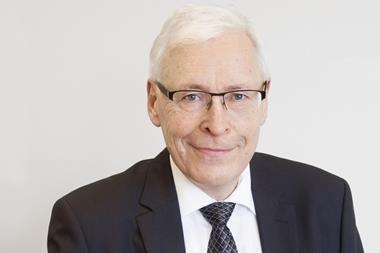As the new government reviews its policy options, pension funds tell George Coats what they think should be on its agenda
Poland's private pensions industry would have been forgiven if, when the liberal Civic Platform (PO) party unexpectedly defeated the conservative Law and Justice (PiS) party in last October's general election, it had let out a sigh of relief.
For years Polish pensions players had watched as their colleagues in neighbouring countries engaged their regulators and supervisors in debate and had seen their guidelines relaxed as their industries evolved from fledgling novelties into major actors in their domestic financial markets. But Poland experienced no such a progression. After the initial reforms in the second half of the 1990s, successive governments failed to engage with the private pensions sector, and consequently the 15 companies (PTEs) that manage the mandatory open pension funds (OFEs) have found themselves in a relative time warp.
The result has been a build up of frustration by the pension funds and a growing backlog of issues that need urgent attention.
The reforms that introduced the second pillar OFEs also reformed the first pillar, switching to notional, non-financial individual accounts, and in effect also did away with early retirement. The result is that of the 19.52% of a person's salary paid in retirement contributions, 12.22% goes to an individual account run by the Social Security Institution (ZUS) which will provide the state old age pension and 7.3% goes to an individual account run by a PTE, and is invested.
"The new mandatory pensions system was fully introduced in 1999 but we still lack very urgent pieces of legislation," notes Marek Góra, a professor at the Warsaw School of Economics and one of the godfathers of the pension reform. "The first is a law on annuities."
The question of annuities is of considerable importance because the first payments are due to be made next year.
"As far as the ZUS accounts are concerned it is easy, the financial market is not involved," says Góra. "But for the private sector part of the system we need detailed rules on what, how and who will eventually pay out of the capital accumulated in individual accounts. And the providers will have to know in advance whether they will play a role - they will have to be licensed, they will have to prepare their infrastructure. I think there is still enough time but only if we give this legislation absolute priority. It should be passed by parliament, signed by the president and all procedural issues completed by March at the latest."
But the government will also find a regulatory backlog, notably on what appear to be overly stringent restrictions on investing abroad and choice of instruments, waiting in its in tray.
"Our regulation was drafted in 1997 and is now 10 years old," says Marek Sakowski, COO, Pekao Pioneer PTE. "Elsewhere in Europe pension funds can use different investments to protect investment results but I am not able to do that. I can just buy and sell shares and bonds but I cannot even protect against FX risk."
And Polish pension funds can only invest 5% of their assets abroad. "There are certain obstacles within these investment limits," notes Michal Szymanski, CIO at Commercial Union Pension Fund. "They must have investment-grade rating, even in cases when you invest in equities, and this is not necessarily the best tool to manage equity risk. In addition, while all trading and custodial costs of domestic investments are covered from the fund, for foreign investments they are paid by the fund management company. This introduces a potential conflict of interest between the fund management company and its clients."
"I am not allowed to buy Google, which has no rating because it does not need a rating," adds Sakowski. "It's crazy. And maybe because of that their share of foreign portfolio in a total portfolio is just 1.1% in all second pillar funds."
"The investment limits mean the current investment universe is too simple; basically the dominant part of the equities portfolio is domestic equity and there's Polish government fixed income securities," adds Szymanski. "This is inadequate for a proper long-term investment strategy given that our pension funds are relatively young and do not have any outflows as people are not yet drawing pensions."
Another challenge, he says, is ‘herd risk', and among the factors here is that the regulator sets a minimum required rate of return. "This basically says that if a pension fund underperforms its peer group by a certain percentage then its shareholders have to make up the difference. That creates a business risk for the PTE and this enforces a peer group reference."
"The minimum required rate of return was a mechanism set at the very beginning of the system to protect the client, and probably it was right to have it at that time," says Lukasz Kalinowski, general manager, AIG Pension Fund. "But it has already fulfilled its role."
So intentionally or not the authorities appear to be restricting the ability of PTEs to diversify. They also appeared to make long-term asset allocation problematic by giving pension fund members the possibility to switch funds each quarter, leaving OFEs with the possibility of having no clients in three months.
"Only a small number move," says Sakowski. "But because of this I have to take the liquidity factor into consideration. For example, I cannot invest in private equity because I may have to sell part of my portfolio in three or six months just to get cash and pay it out in transfers."
It is a factor, agrees Kalinowski. "However the system is quite cleverly organised," he says. "The exchange of assets in terms of the transfer of clients is done through central clearing house so actually what you get or lose is the net assets brought by the clients going in or out. And overall less than 3% of clients change funds in a year which, although not negligible, is low compared with countries in Latin America where they have similar systems to ours."
So what do they want the new government to do?
"It is time now for many of the restrictions to be relaxed, especially with foreign investments," says Kalinowski. "Of course, nothing has to be done dramatically. Generally speaking the funds are going well, the rates of return are high, but this is also related to the growth of the Polish economy in recent years."
"We lack multi-funds," says Sakowski. "When the Warsaw Stock Exchange was growing 20% or 30% people should have had the option to decide whether they could put all their money in shares or shift to bonds three years before retirement. Some 10 years ago there was a plan to have two sub-funds within my pension fund, one with 40% in shares and the other 10%. But it didn't happen."
Szymanski is more cautious on multi-funds. "They might be a challenge," he says. "A simple solution would be to introduce two other funds, one that is very safe for people who are just about to retire and one that has more risk with more equities for young people who have just joined the system so have a longer investment horizon. But we should not introduce ‘Swedish risk', where people can choose from a wide variety of funds but in practice are unable to make an informed decision. Our system is not designed for informed investors but for everybody, and everybody means that the majority of investors are not informed."
And a decision should be made concerning annuities. Before the general election the labour ministry had prepared a draft that foresaw the creation of specialised private annuity companies but it had not consulted the industry and did not address whether there was sufficient time to establish separate institutions or their start-up costs.
"The draft proposed three products, all based on life annuities, either for one person, with or without a guarantee, and for individuals or a couple," says Kalinowski. "They would be an insurance product with a longevity risk. But the choice could be wider. I believe that programmed withdrawals would be a good option for Poland. They have no longevity risk because they are a payout of the accumulated capital and can be paid directly from the pension fund company rather than by an insurance company."














No comments yet